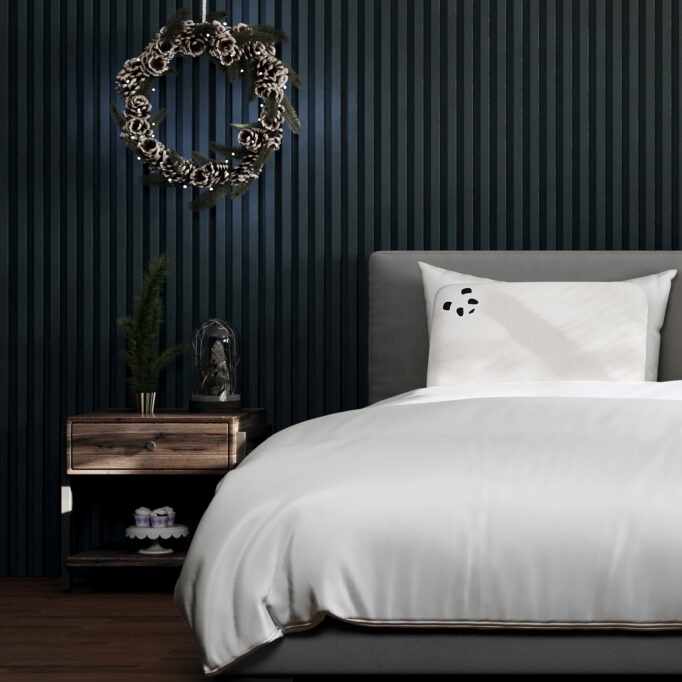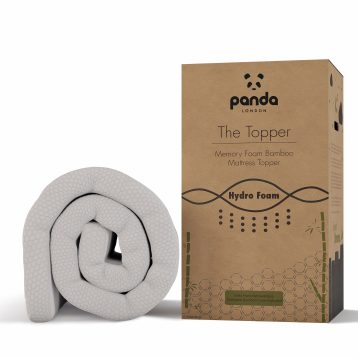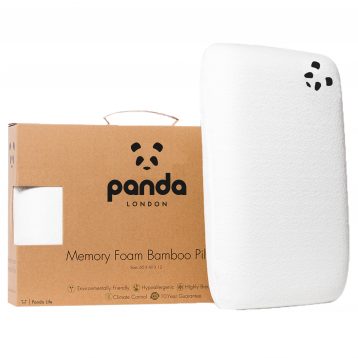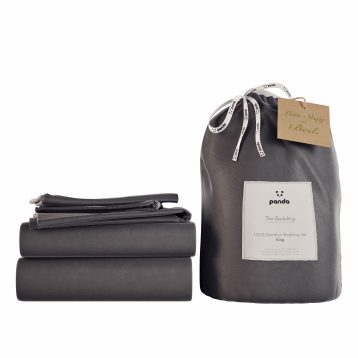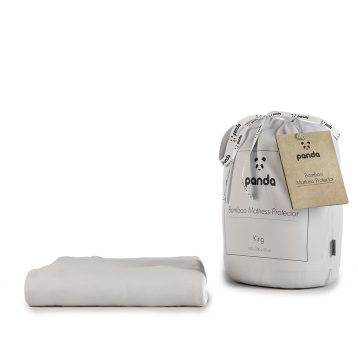As the temperature drops and Winter settles in, it’s essential to prioritise your sleep by investing in the best bedding for the season. The right Winter bedding not only keeps you warm and cosy but also enhances the quality of your sleep during the colder months – and we all want to sleep better during this time of year. So sit back and relax, and we’ll explore the types of Winter bedding available, the importance of choosing suitable materials, and bonus tips for creating a truly inviting and snug winter bedroom. Let’s dive in and discover the key elements that will ensure a restful and comfortable night’s sleep with our Winter bed linens buying tips.
What are the bedding types for winter?
When it comes to Winter bedding, there is a range of options to suit different preferences and sleep needs.
Duvets and comforters
First, let’s consider duvets and comforters; the main difference between the two is that a duvet is thicker and typically goes alongside a cover that can be changed regularly. A comforter is just a thicker quilted blanket; if you want to be super cosy in the Winter, opt for a duvet with a high tog or put two duvets together inside a cover! For warmth, feathers, wool, and bamboo duvets are best.
Bamboo sheets
Bamboo is the fabric of the future, and it has grown in popularity recently – for good reason. Bamboo bedding has many benefits: it is soft and gentle on the skin, hypoallergenic, and thermoregulating. This last one means your sheets will react to your temperature to keep you warm when it’s cold! They’re also moisture-wicking, so if you sweat under a thick duvet in the night, there’s no need to worry.
Electric blankets
An electric blanket is a thin layer you can add on top of your mattress, which plugs in; turn it on an hour or before bed to allow it to warm up. Then turn it off as you get into bed for safety reasons, and you’ll be completely toasty as you drift off. These are some of the best cold-weather sleep accessories. Further safety tips include not using these blankets when applying a topical emollient cream (as these can be flammable) and not pairing them with a hot water bottle.
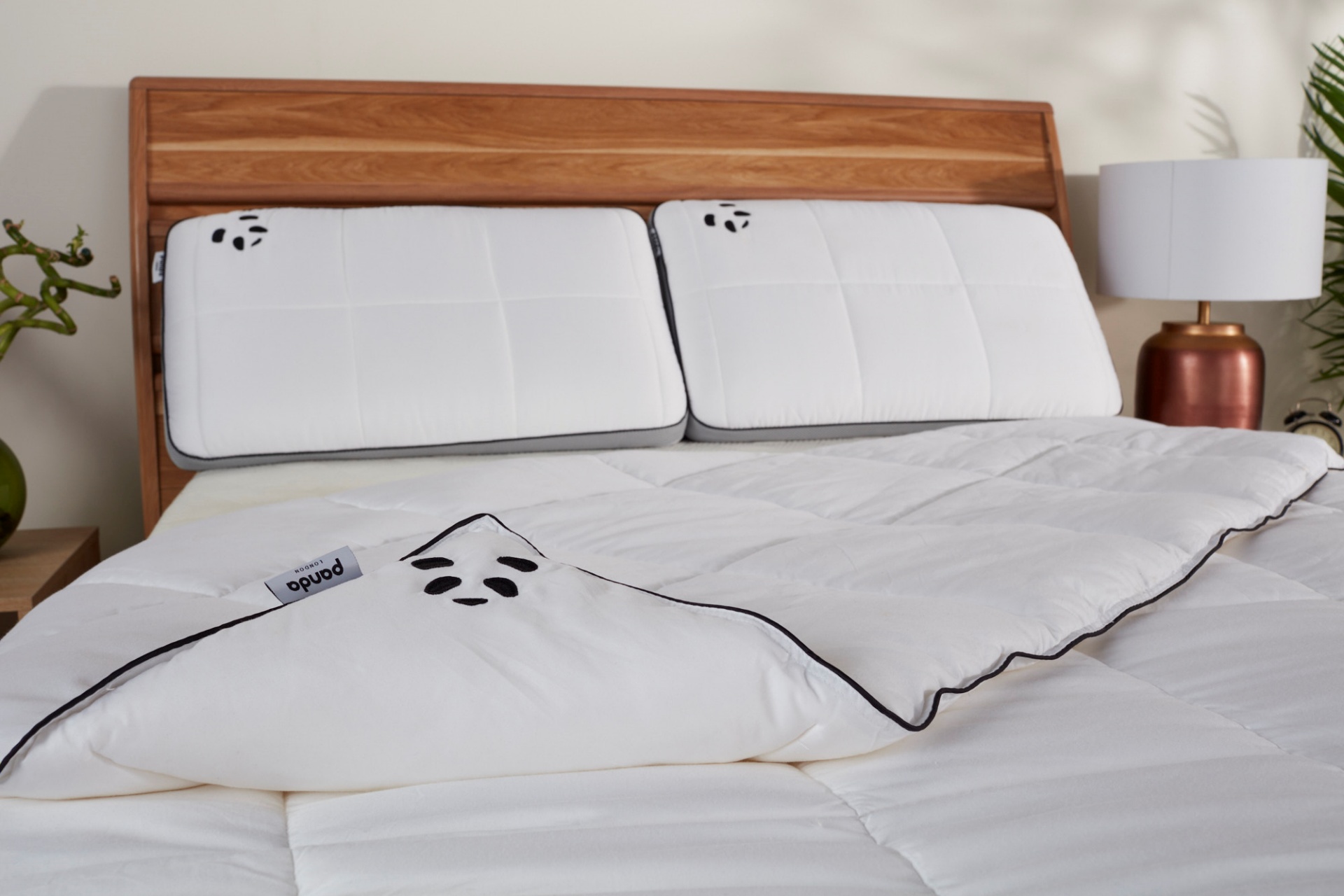
Materials matter
One crucial factor to consider when choosing winter bedding is the materials used. The best winter duvets and comforters are warm, but don’t leave you sweating! Opt for natural materials that provide exceptional insulation and breathability: wool, down, and bamboo are excellent choices for their warmth, softness, and ability to regulate temperature. They trap heat, keeping you snug and allowing airflow to prevent overheating at night. Each of these materials will suit different people better; if you prefer something thick and heavier, wool might be best for you – for softness, you should go for bamboo, while down is snuggly.
How do you choose the right winter bedding for you?
Choosing the best warm bedding for Winter involves considering personal preferences and specific needs. A down comforter may be ideal if you prefer a lightweight option with exceptional warmth. For those who prefer alternatives to animal-based materials, hypoallergenic duvets (like feather-free bamboo!) options can provide comparable warmth. When you select, please look at your sleeping position, room temperature, and allergies. The best Winter sheets and blankets are the ones that work for you, so be sure to keep that in mind.
It is also worth thinking about your budget and shopping in the pre-Christmas sales to secure a good deal on bedding that will last – bamboo is so durable that it will serve you well for many Winters to come. Lastly, choose bedding that matches your bedroom decor as best as possible; that way, you’ll have a succinct aesthetic that works for you and looks fantastic.
Care and maintenance tips
Proper care and maintenance of your winter bedding are crucial for its longevity and optimal performance. Follow the manufacturer’s instructions for cleaning and washing your bedding – does it need to be washed on a cooler setting, for example, and can it be tumble dried? Regularly air out your bedding to prevent any odour or moisture build-up. The benefit of a duvet over a comforter is that the cover is removable, so it can be washed. Furthermore, washable pillow protectors are a great way to keep your bedding fresh and clean. Giving your bedding proper care will ensure that it remains cosy and inviting throughout each Winter season. Store it correctly during the warmer months: somewhere dry and cool to prevent mould and mildew creeping in.
Bonus tips and cosy winter bedroom ideas
In addition to selecting the right Winter bedding essentials, you can incorporate several other elements to enhance the cosiness of your winter bedroom. Layer your bedding with extra blankets or throws for added warmth and comfort – faux fur and velvet throws add a cosy and luxurious feel. Add textured rugs or sheepskin hides to create a soft and comforting surface for your feet.
Another way to help you sleep better is by creating a relaxing bedtime routine that you can stick to every night to train your brain that it’s time for sleep. This can look different for everybody and might involve a warm bath, some reading time, a pamper session, journaling, meditation or something else. Limit screen time and invest in snuggly pyjamas for those colder nights and enhanced Winter bedroom comfort.
How to choose the best winter bedding
Choosing Winter bedding relies on knowing yourself – do you get super cold at night, prefer a heavy duvet, and what materials feel nice on your skin? Think about these questions and look at bedding that suits your needs, then ensure your room is super cosy and get ready for relaxing Winter bedtimes. Good quality bedding can help you sleep better, which is key at this time of year when stress and illness can be at an all-time high. Hopefully, our cold-weather bedding guide has given you an idea of where to start with these frosty-season sleep solutions!
FAQ
How can I keep my bed warm without using heavy blankets?
Layering is key. Use a thermal blanket or lightweight duvet; add extra blankets as needed.
Are electric blankets a good choice for winter bedding?
Yes, electric blankets can add extra warmth. Ensure they meet safety standards and follow usage guidelines.
Are there specific sheets for winter?
Yes, consider bamboo sheets for winter. They are warmer and cosier than standard cotton.
What's the ideal tog rating for a winter duvet?
A tog rating of 10.5 or higher is suitable for winter. However, personal preferences may vary.
How often should I change winter bedding?
Aim for every one to two weeks to maintain a fresh and cosy sleeping environment.
Are there specific colours that promote a cosy winter atmosphere?
Deep, rich colours like burgundy, navy, or forest green can add a warm and festive touch to your winter bedding.
Explore our range:
Bamboo Mattress Topper
£99.95 – £199.95Memory Foam Bamboo Pillow
£44.95100% Bamboo Bedding
£19.95 – £180.00Bamboo Mattress Protector
£19.95 – £50.00
